Plants that are poisonous to cats: the flowers and foliage that aren't so feline-friendly
Need to know the plants that are poisonous to cats, so you can protect your feline friend? Look no further – we're here to help


Plants that are poisonous to cats – they're good to know if you're the lucky owner of a feline friend. This is especially true if you also own a garden, or even if you just have a few pot plants indoors.
For just as there are the most poisonous plants for dogs, there are some plants that can make your kitty really quite ill, too. And obviously, no one wants that. But being in the know can help you reconsider which plants to bring into your plot in the first place – or at least, inspire a good sort out.
As vet Lynne James from The People's Dispensary for Sick Animals (PDSA) says, 'Owning a pet doesn't mean you can't have a beautiful garden, you'll just need to do a bit more planning to help you steer clear of any plants that could be harmful.'
So to help you create a flowery (or leafy) haven which both you and your four-legged feline can enjoy, we've rounded up some of the plants to be especially wary of. Keep reading to find out more.
Be wary of lilies
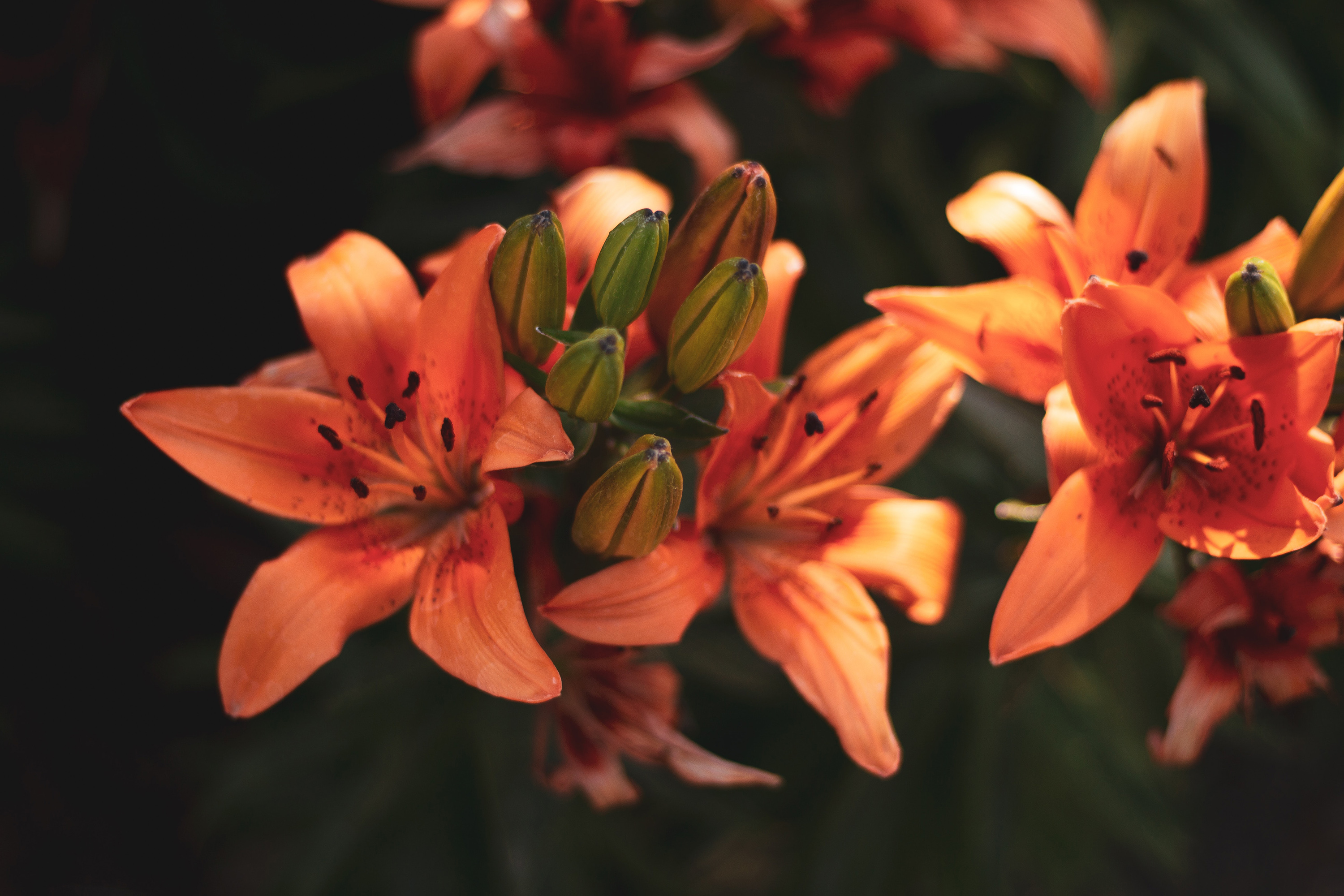
If you have recently followed our guide on how to grow lilies or are just quite simply a fan, then there's something you need to know. 'Many species of lily are potentially lethal to cats,' warns PDSA Vet Lynne James, 'with all parts of the plant being toxic.' Even just a nibble on a leaf, stem, or bloom can be harmful.
You might be wondering why a cat would ever try to eat a lily, but it's not so much the eating that's the problem. You know how lilies tend to have pollen-covered stamens, that can rather annoyingly stain the carpet if you don't catch them in time? Well, as it turns out, the risk when it comes to cats is the pollen catching on their fur as they brush past.
As Lynne James explains, this pollen can then be unintentionally licked by cats as they groom themselves. True, it is more of an issue around bouquets of flowers in the home, but it's definitely something to be aware of.
As the PDSA explain, not only is it species such as Arum, Tiger, Easter, and Stargazer – the lovely lily of the valley is one to avoid too. Sadly, both the flowers and leaves contain a toxin which can lead to stomach upset, heart problems, fits, and even collapsing.
Watch out for spring bulbs
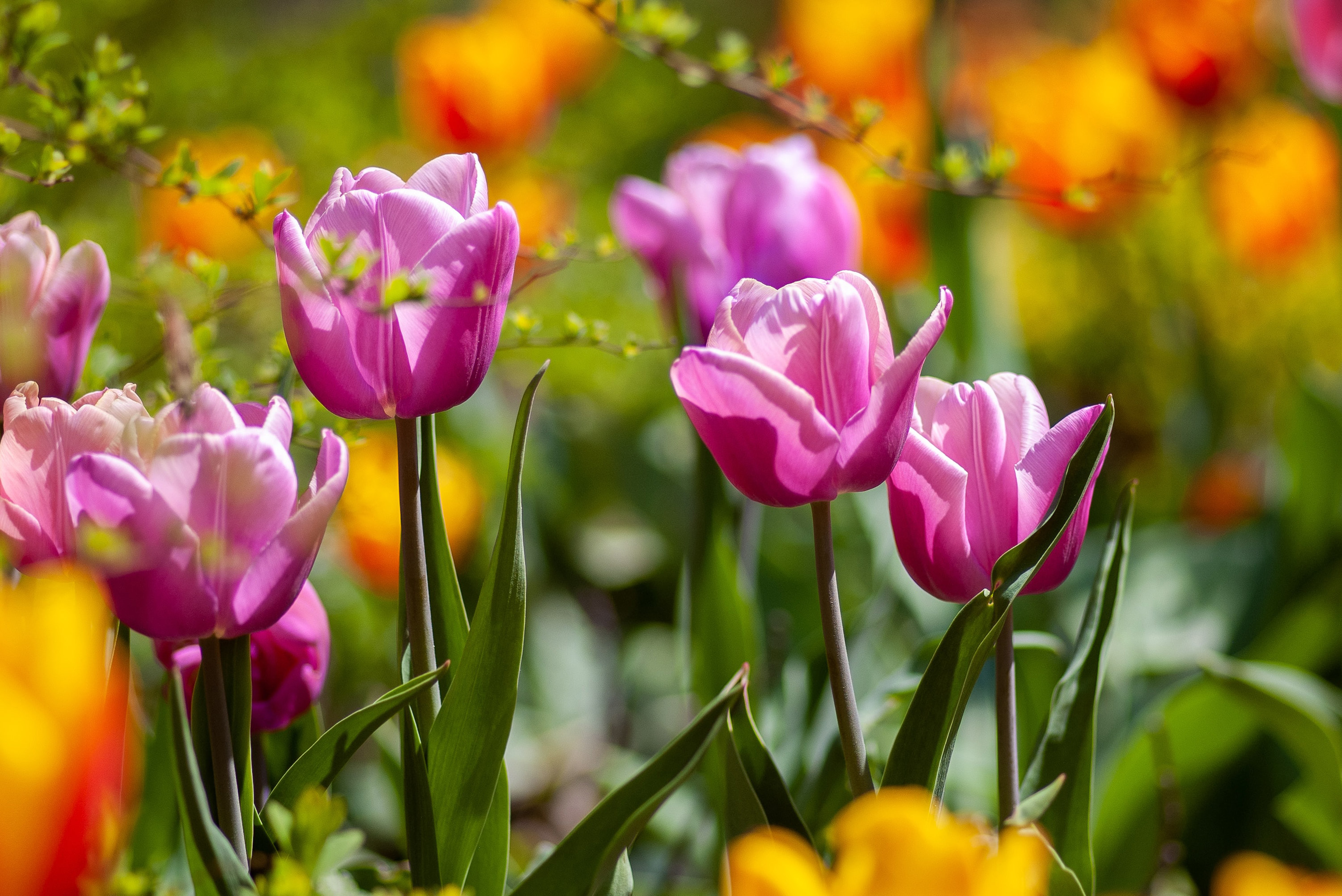
Bulbs offer a cheery splash of colour to any garden, as well as the promise of warmer weather. You may have already seen our guide to planting bulbs, or even how to force bulbs indoors for an early display. But do be wary when it comes to planting bulbs around cats.
'As a general rule, avoid plants with bulbs such as daffodils or autumn crocuses,' says PDSA Vet Lynne James. 'These can often be poisonous, especially if your pet digs up and eats the bulbs. An alternative to consider are African daisies, which will brighten up your garden and are non-toxic to cats (and dogs).'
Daffodils, although jolly in appearance, can be potentially lethal to small animals. And if you love to bring them indoors to brighten up your home (who doesn't?), make sure they are well out of reach. Adverse effects can occur even if your cat simply drinks water from a bunch's vase, as advises the PDSA.
Other bulbs to be wary of include snowdrops, tulips, hyacinth, and Amaryllis.
Reconsider your cottage garden style planting

If you love our cottage garden ideas, you may be tempted to recreate the romantic look yourself. But before you get started, it's important to do a bit of research, as the style includes many plants that are poisonous to cats.
As advised by the team at Cats Protection, the hazardous kinds include Clematis, Delphinium, sweet pea, Nicotiana, Digitalis, Aquilegia, and lupins. They might make up some of the best cottage garden plants, but they're not so fabulous if your cat gets ahold of them.
The PDSA also warns against geraniums, which are poisonous to cats as well as dogs. Azalea and Rhododendron are a big one too – they are highly toxic even if just a few leaves are eaten. And, if you love our advice on how to plant a wildflower meadow for a more natural area of your plot, then just watch out for ragwort. Its bobbing yellow blooms may add sunny colour, but as the PSDA advise, even small amounts can be fatal to pets.
Other plants to be wary of, according to Cats Protection, include (but are not limited to) box, Chrysanthemum, Hydrangea, Iris, Wisteria, Rudbeckia, and jasmine.
PDSA Vet Lynne James advises to speak with your garden centre if you're unsure. In the UK, 'the Horticultural Trade Association has a code of practice that most garden centres adhere to. The code labels plants A (poisonous), B (toxic if eaten), and C (harmful if eaten). Plants in any of these categories are best avoided for a pet-friendly garden.'
Be careful with cats and indoor plants
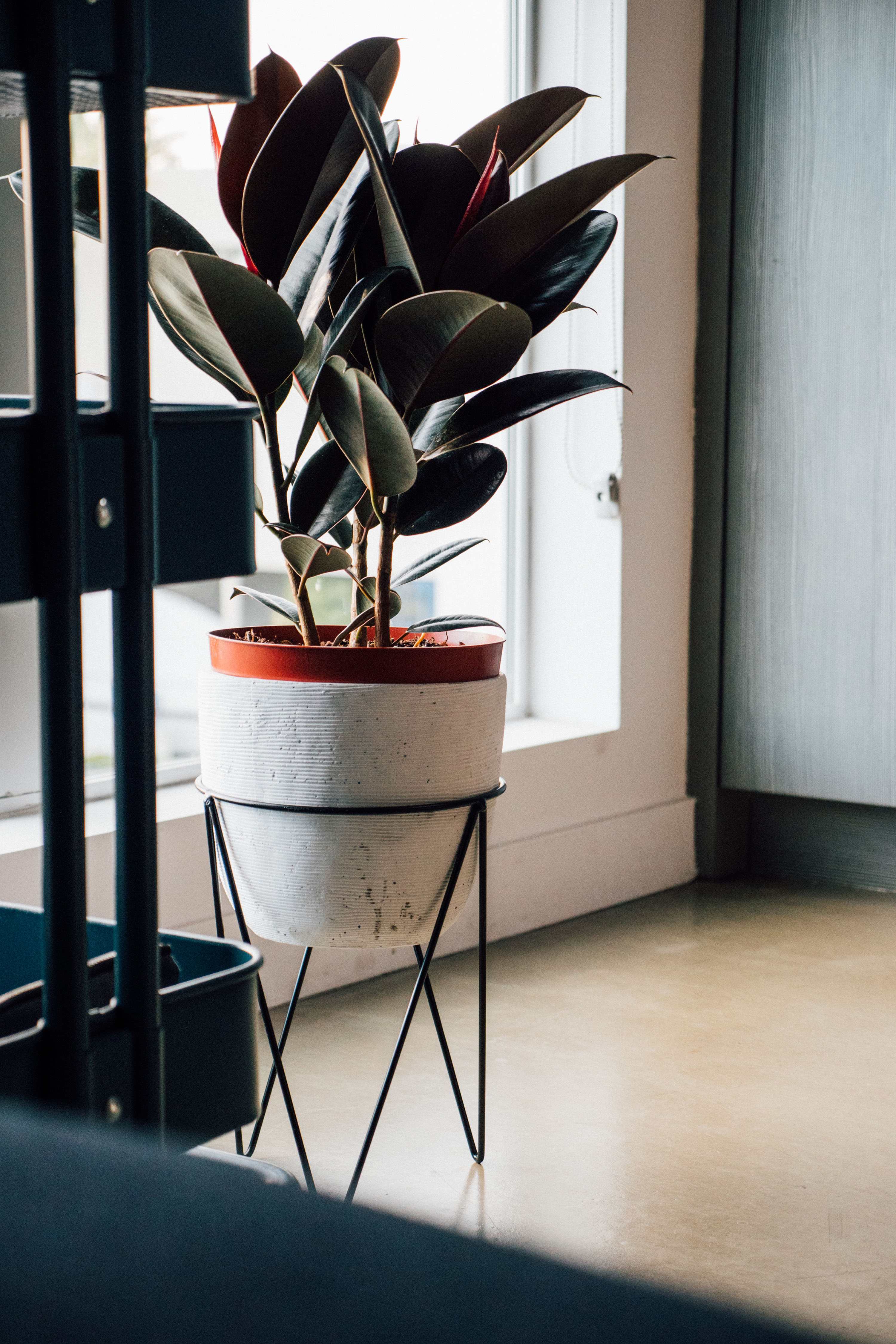
If you've been inspired by our indoor garden ideas then be careful that your new leafy treasures aren't toxic for your cat. As Cats Protection advises, poisonous varieties include the rubber plant (seen above) dumb cane (which can also irritate the skin) and ferns. Festive plants are also a hazard – that includes poinsettia, holly and mistletoe.
For indoor gardeners keen on growing vegetables in pots, it's also good to bear in mind that tomatoes are toxic. That includes the leaves as well as any unripe fruit, says the PDSA.
The Curio rowleyanus (string of pearls) is having a bit of a moment when it comes to indoor plant ideas. Often positioned up high, it's elegant trails of foliage can be ever so enticing to playful cats. But, according to Julia Wilson of Cat-World, it can lead to liver failure (albeit only if eaten in large quantities, in most instances). However, small doses can lead to stomach upset, whilst exposure to sap can cause skin irritation.
What are the signs that my cat has eaten a poisonous plant?
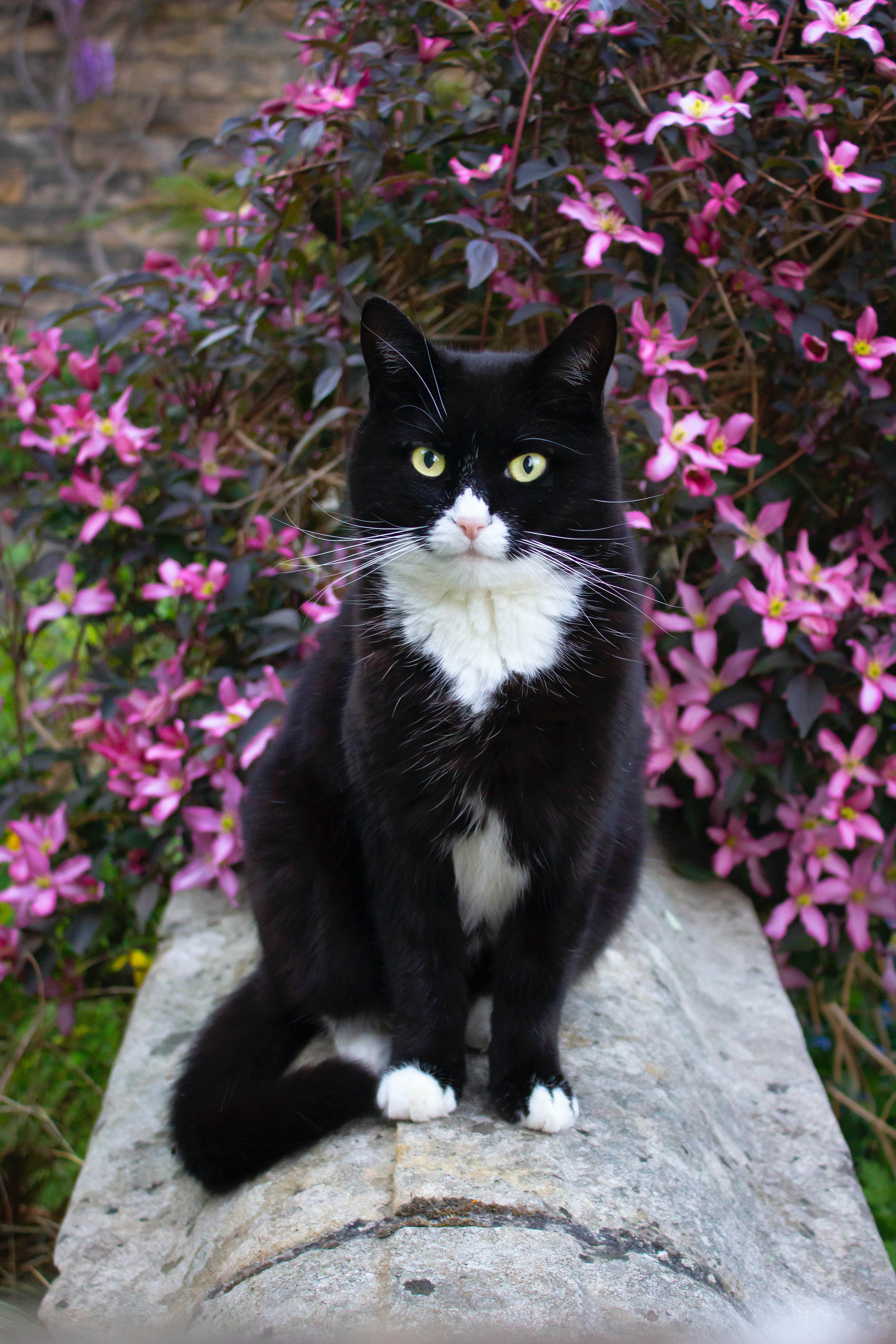
According to the team at Cats Protection, the following signs can appear if your cat has eaten a poisonous plant:
- Salivation
- Vomiting and/or diarrhoea
- Twitching
- Fitting
- Breathing difficulties
- Shock
- Collapse or coma
It's important to remember that this list is not finite – other effects can take hold as well. Don't wait for symptoms to develop – if you suspect a poisoning, try not to panic but do take your cat to the vet as quickly as you can.
Which plants are safe for cats?
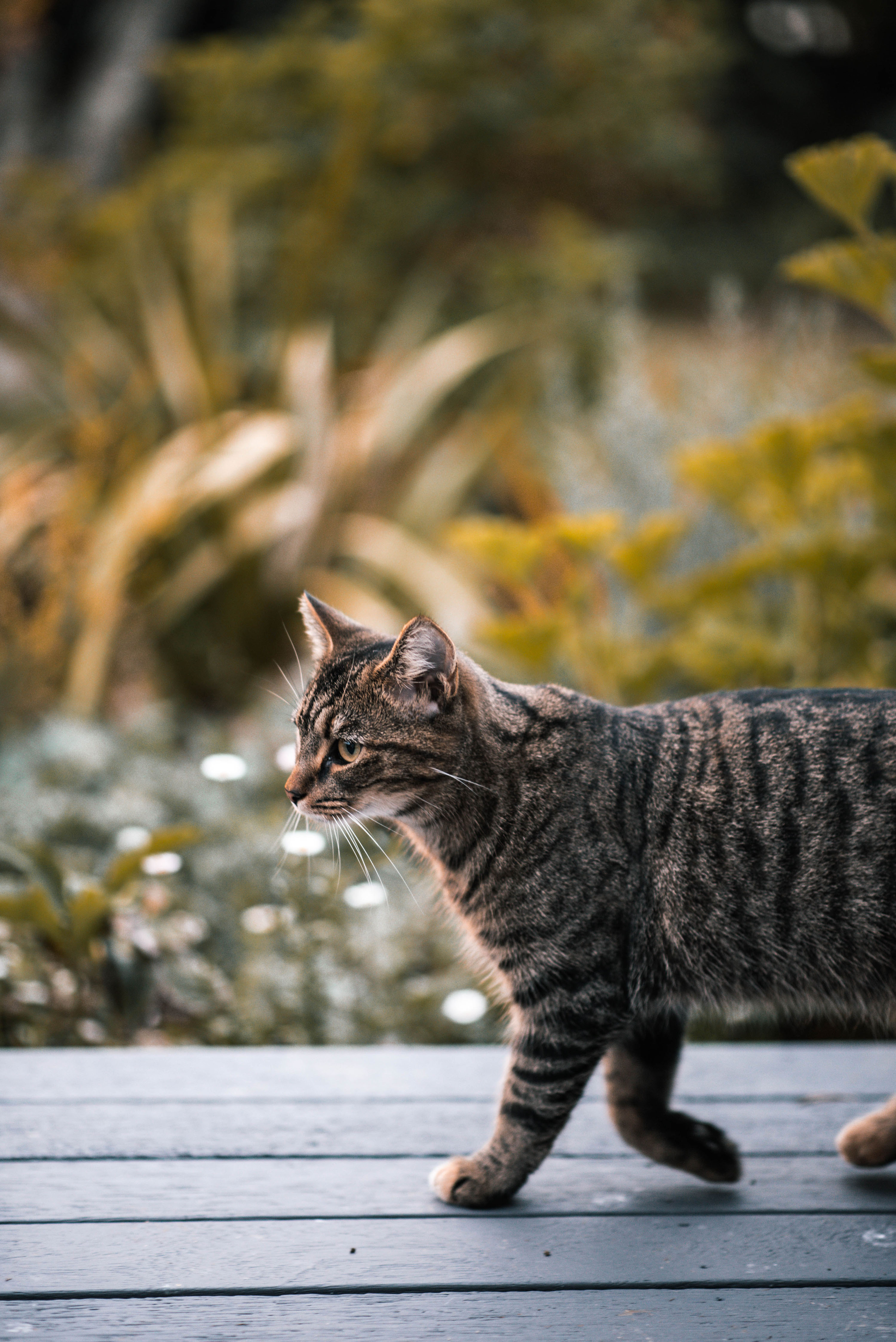
Of course, every garden needs a plant or two, and thankfully there are lots of non-toxic plants that you can grow without worry. Here are five of our favourites from Cats Protection's list:
- Zinnias come in a vibrant spectrum of colours, are a favourite of bees and are easy to grow from seed.
- Sunflowers are a perfect addition and are loved by all. Opt for traditional yellow blooms or deep red and orange kinds if you fancy something a bit different. Their seeds also provide food for birds. Head over to our guide on how to grow sunflowers to start your own.
- Who doesn't love roses? They're one of our favourites, and are cat-friendly. Take a look at these 5 beautiful roses to introduce colour and scent to your garden.
- Nasturtiums make a great addition to raised beds or patio pots. Available in a variety of colours, the flowers are edible for humans and will pep up a salad instantly.
- Hollyhocks are a classic cottage garden flower and are safe for cats, too.
How can I stop my cat from eating poisonous plants?

If you want to deter your feline friend from eating poisonous plants, then these tips might help:
- 'When gardening, clear away clippings as these may intrigue curious cats,' suggests Cats Protection.
- Keep your plants out of reach. With house plants, this could mean they live in a room which your cat can't access. Unfortunately it's more difficult with outside plants – cats are quite acrobatic when they want to be!
- Of course, the safest option is to only keep cat-friendly plants.

The garden was always a big part of Holly's life growing up, as was the surrounding New Forest where she lived. Her appreciation for the great outdoors has only grown since then. She's been an allotment keeper, a professional gardener, and a botanical illustrator – plants are her passion.
